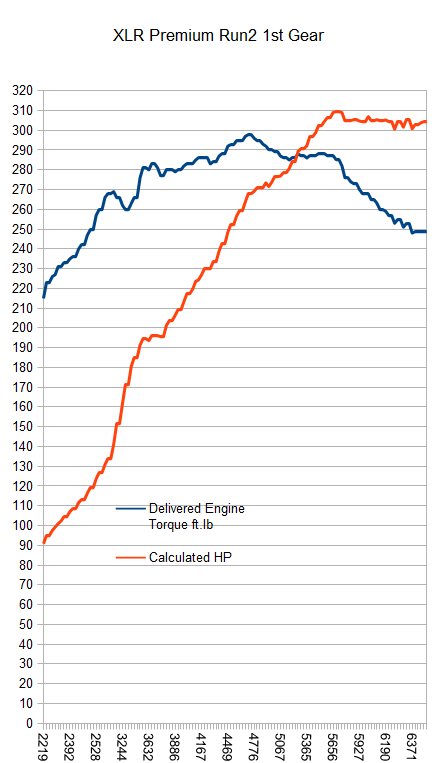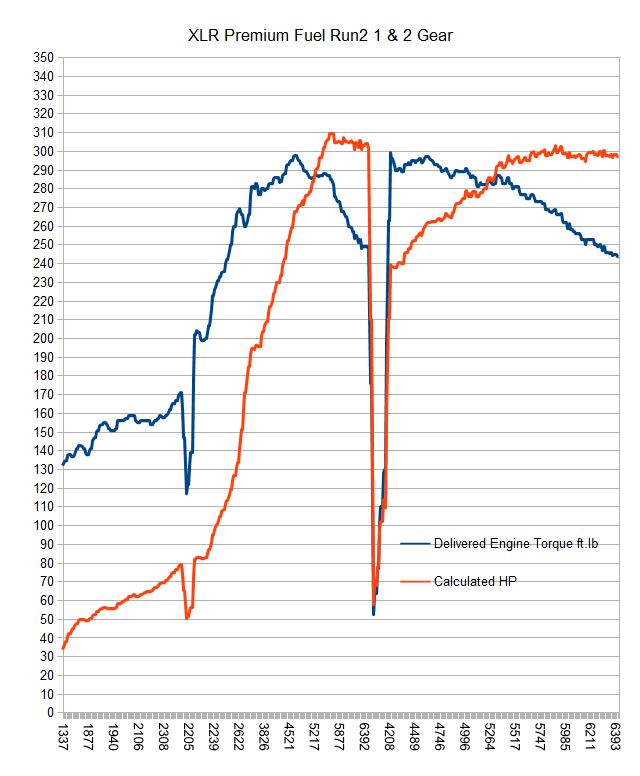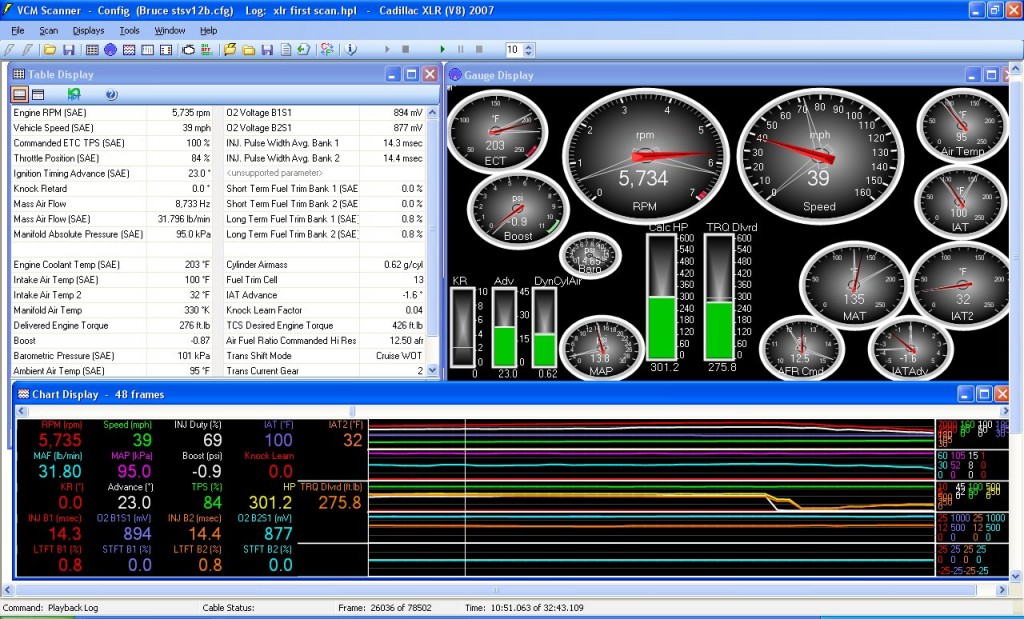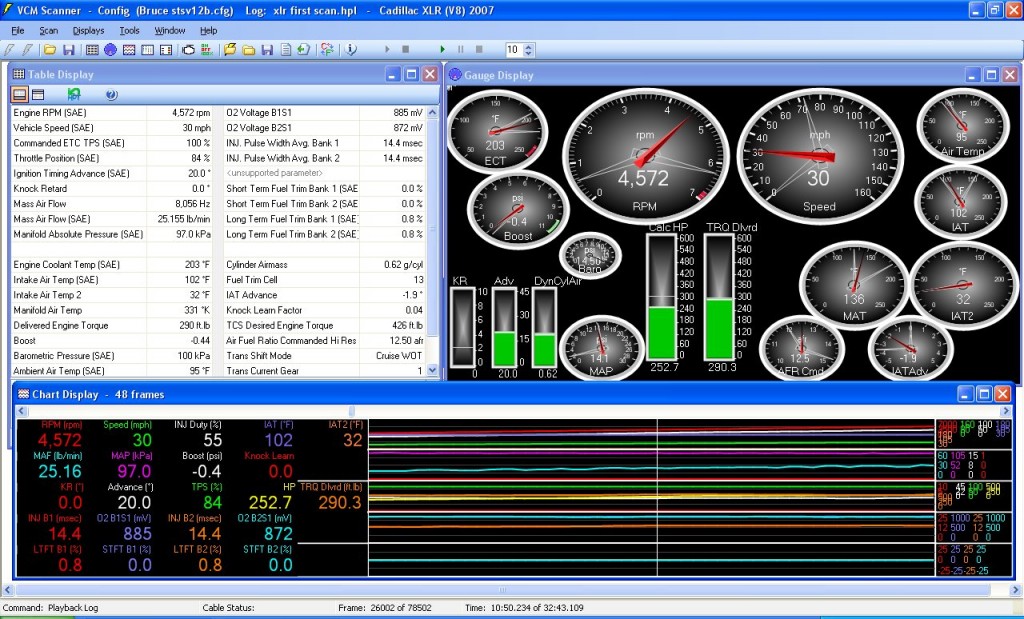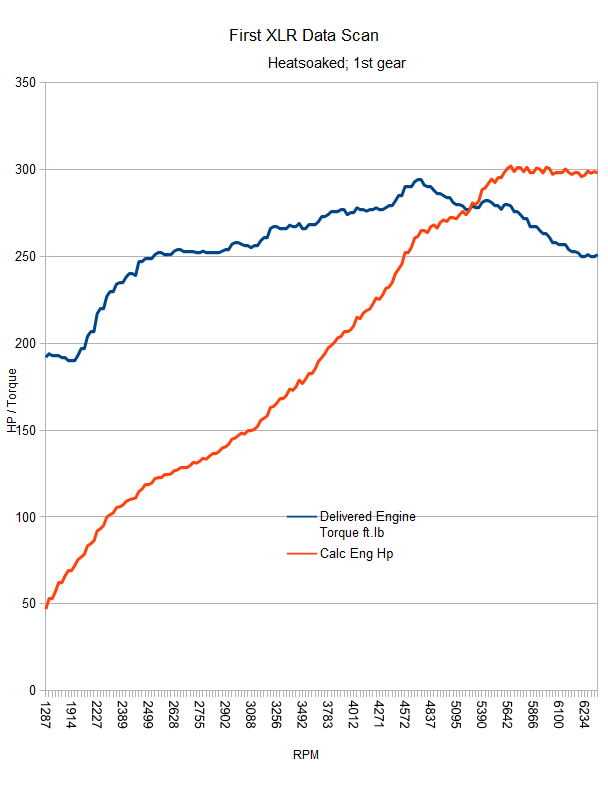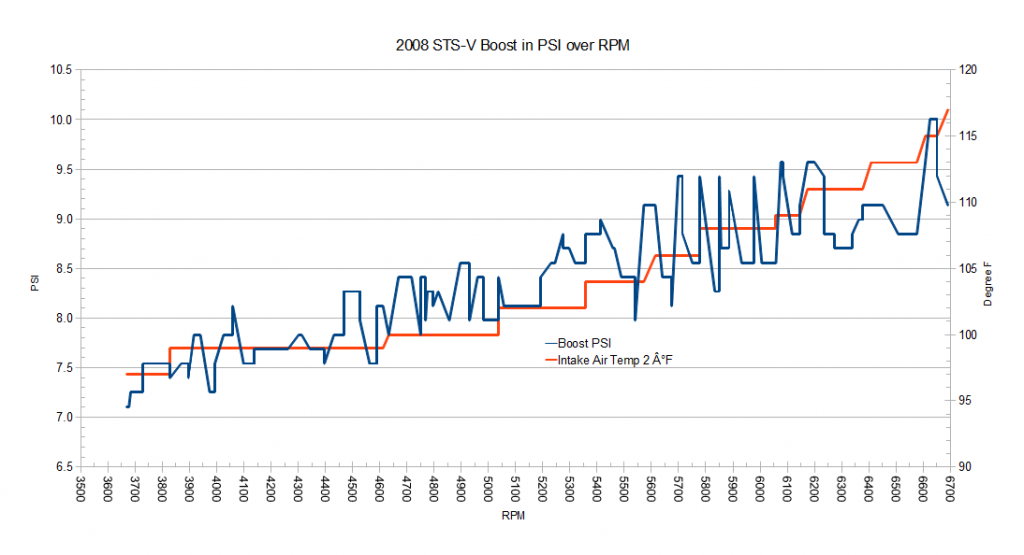
I am running a string of tests to establish a baseline for my 2007 Cadillac XLR. The previous test is here: Initial Cadillac XLR Hptuners Scanner setup
That test showed 301 hp at 5734 rpm, 290 lb ft of torque at 4572 rpm. Temp was 95 F.
Tonight’s test was with premium fuel (newly refilled), and without heat soak. The XLR was warm, having run a set course during the test. Temps locally were 95 F, 102 F into the engine, and 141 F in the manifold. Tonight’s run and previous were with the top down.
Tonight’s max hp delivered was 309 hp at around 5700 rpm. Delivered Torque max was 298 ft-lb at 4700 rpm. This is slightly better than test 1, and I see by comparing the two that incoming air and manifold air were consistent (I was thinking tonight was cooler). Tonight’s engine coolant temp was lower at 192 F vs 203 F last night — unlikely to be a factor. I suspected the XLR was delivered with regular unleaded and was hoping to see a bit more power with premium unleaded.
This table shows 1st gear, the 1-2 gear shift, and 2nd gear pull. 2nd gear has slightly lower although equivalent hp to first. I am assuming these calculations are unaffected by vehicle aerodynamics, but I may be wrong.
Here is the HPtuners scanner shot at max hp:
Summary:
Tonight’s test is very consistent with test 1. With the XLR sitting all day prior to the test and not heat soaked, but with same temp air, the results were slightly (8 hp, 8 ft lb) higher than previous. In the heat there is almost 2 degrees of retard (lost advance) due to incoming air temp advance (gauge in lower right).
Corrected to SAE standard these readings would be higher: Note: The relative horsepower calculations are made in accordance with SAE J1349. The standard reference conditions for SAE J1349 are: Air temp 77 deg F (25 deg C), 29.235 Inches- Hg (990 mb) actual pressure and 0% relative humidity.

Corrected factor for conditions: 1.045. Corrected hp: 309 x 1.045 = 323 hp. 298 ft lb x 1.045 = 311 lb ft of torque. These appear consistent with expected 320 hp & 315 lb ft engine rating from Cadillac.
I would like to see additional tests with no changes for repeatability, but overall the XLR LH2 appears to be performing as expected. These tests will form the baseline to compare for tuning or mods.

